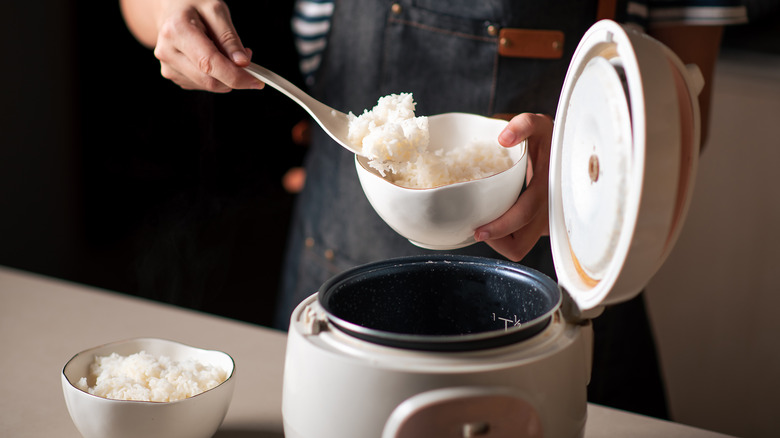Be Mindful Of Kitchen Humidity When Preparing Any Rice Dish
When perfectly cooked, rice serves as a delicious cushion to the play of flavors created by other ingredients. Unlike most dishes, though, preparing it properly requires more than just intuitive cooking. Each variety of rice has its own required moisture content and method of preparation and, even then, following a recipe doesn't always guarantee success.
Even when you've figured out the perfect water-to-rice ratio for your usual choice of grain, another crucial factor to consider is humidity, which is a variable that depends on where you live and the weather conditions there. We know the importance of properly storing rice in airtight containers to preserve its quality since grains tend to absorb moisture. What you might not pay attention to is how the humidity level in your kitchen also affects the cooking process. Too humid, and you could end up with soggy rice despite following your usual formula. A more arid setting, on the other hand, can leave the grains dry, crunchy, and undercooked.
Unless you have a rice cooker with settings that can adjust to different environmental conditions, there's no shortcut to dealing with humidity as you cook rice. Keeping a close eye is your best bet so you can make adjustments when necessary. Expect to have your cooking time possibly lengthened to accommodate these adjustments as well. Enjoying tender, fluffy grains afterward is worth all the trouble, though.
Different levels of humidity call for different adjustments when cooking rice
When it's an extra humid day, reduce the amount of water or broth you usually use and observe its effects on the grains. You might also have to adjust the heat and check if the rice is done earlier than you're used to. Since mushy rice tends to stick to the bottom of a pan or skillet, stir it occasionally. Don't worry about undercooking rice in humid conditions; you can save it by adding water in small increments if it seems to remain hard and crunchy.
On the other hand, drier weather calls for adding more water than usual. You'd need to lengthen the cooking time so the rice is able to soften. Avoid constantly removing the pot lid to check if the food is done since this would allow steam to escape rather than keeping the rice moist. Once you do check on it, you can gauge if the rice is cooked by scooping out a small amount from the middle of the pot to taste. Inspect, too, if there is any remaining liquid in the pit you made. Once the rice is done to your satisfaction, follow a couple of our tips for cooking rice perfectly: Let the rice rest to allow the moisture to distribute properly among its different layers, and fluff the grains with a fork so they don't stick together.

